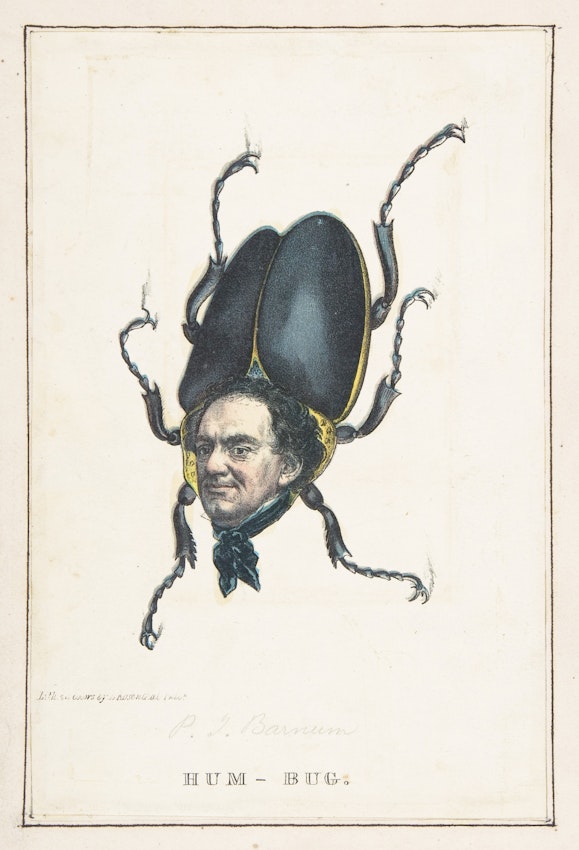“Transmigration is held to be very marvelous”, reports H. L. Stephens in The Comic Natural History of the Human Race. And while these “kaleideiscopical” experiences are often attributed to “Hindoos, and other far-off outsiders”, he sets out to prove that metempsychosis can occur closer to home in Philadelphia. Lampooning well-known local and national personalities of the mid-nineteenth century, Stephens and the lithographer Max Rosenthal transformed them into exotic hybrid caricatures: forty human heads mounted on bugs, fish, and bats.
Thomas Birch Florence, a Democratic congressman from Pennsylvania, becomes The Florence Humming Bird (Trochilus politicus). Thanks to its popular vocalizations, the bird favors “the stump” as a habitat. Francis Martin Drexel — artist, banker, and father of the founder of Drexel University — reincarnates as a Gold Fish. You can find this species about the “shallow waters” of Wall Street: “we have caught him for you; now stare at him as you please—done in gold, gone, changed, transmuted perfectly, he did it himself—gold, gold—now he has turned into gold: stare at him.” The circus tycoon P. T. Barnum, self-proclaimed “Prince of Humbugs”, metamorphoses into a kind of Kafkaesque freakshow: his head growing out of a carapace with six candlewick legs. Here the Comic Natural History’s technique itself becomes a spoof of Barnum, whose fame was partially owed to his “Fee-jee Mermaid” — a hoax and monstrous cut-up of baboon, orangutan, and piscine parts.

While many creatures in this comic bestiary represent specific people, others appear to satirize broader nineteenth-century types. The authors claim that Audubon, for instance, overlooked the Jail Bird, a trickster that is “often taken by hand to be confined in a cage, under the vain hope that it may learn to change its tune”. In the wild, the bird can be found near a fence with shiny things in its beak. Jail Birds are often caught by the Stool Pigeon, who is “a spy of the police”, eavesdropping at “ins and outs, ups and downs, churchs, court houses, play houses, poor houses, jail houses, hot houses, beer houses, hose houses, &c. &c.”
The bird must be able to get on each particular “lay,” know all the “stalls”—be up to any “dodge,” ready for every “double,” apt at a “spot,” and “leary” at a “pull,” “shady” at a “blow,” and unerring at a “pipe,” “down upon a “plant,” certain as to the “swag,” know a “Thimble” from a “Peter” or “dummy,” and the “kickes clye” from the “pit,” and take a “tip” when “all’s right,” not always “lagg,” the crossman or put him in “quay.” Now a man to do all this must be “a bird.”